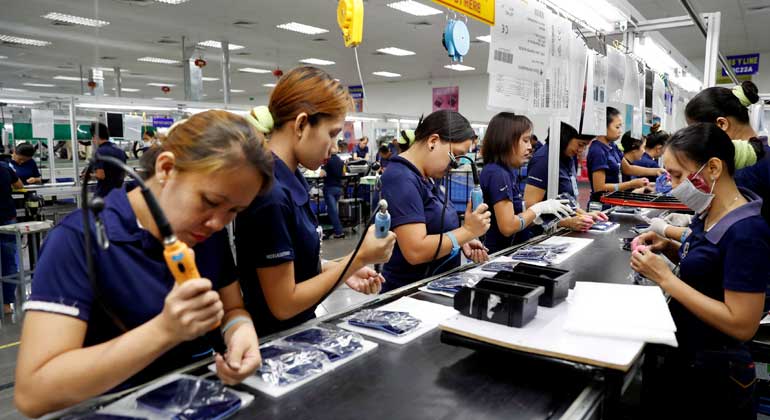Manufacturing expands for 8th straight month in November

Factory output expanded for an eighth straight month in November as restrictions on movement eased, the Philippine Statistics Authority (PSA) reported on Friday.
Preliminary results of the agency’s latest Monthly Integrated Survey of Selected Industries showed factory output, as measured by the Volume of Production Index (VoPI), grew by 25.3% year on year in November.
This was slightly higher than the revised 25.2% growth in October, and a turnaround from the 21.8% decline in November 2020.
November’s print was the eighth consecutive month that the VoPI stayed in the positive territory or since April.
Year to date, industrial production growth averaged 55.5%.
The PSA noted growth in the VoPI in 12 out of 22 industry divisions in November, led by manufacture of coke and refined petroleum products (84.8%) and manufacture of wood, bamboo, cane, rattan articles and related products (83.9%).
In comparison, Philippines’ manufacturing Purchasing Managers Index accelerated to an eight-month high to 51.7 in November from 51 in October. A PMI reading above 50 indicates improvement in business conditions from the month before.
Average capacity utilization — the extent to which industry resources are used in the production of goods — averaged 67.4% in November from 67.2% the previous month. Twenty out of 22 sectors averaged capacity utilization rate of at least 50%.
Philippine Exporters Confederation, Inc. President Sergio R. Ortiz-Luis, Jr. cited the more relaxed restrictions as the main driver of increased manufacturing activity in November.
“The rise [in November] was natural because of relaxed restrictions,” Mr. Ortiz-Luis said in a phone interview.
“There is no way down [in factory output] since the people were coming to work already, but because of the Omicron variant, strict restrictions are expected which will halt [manufacturing activities],” Mr. Ortiz-Luis Jr. said in Filipino.
Asian Institute of Management economist John Paolo R. Rivera noted that November’s increase in production is expected as demand improved.
“As we relax restrictions, demand will increase, production should adjust to meet the increased demand coupled by the recent holiday season,” Mr. Rivera said in a separate e-mail interview on Friday.
Metro Manila shifted to a Alert Level 2 starting in November, as the number of coronavirus disease 2019 (COVID-19) cases dropped. This meant most businesses were allowed to increase capacity and age-based mobility restrictions were removed.
However, the Philippines is currently facing a fresh surge in COVID-19 infections, prompting the return to a more stringent Alert Level 3.
The Department of Health on Friday reported 21,819 new infections, bringing the active cases to 77,639. As of Jan. 6, the country has recorded a total of 43 cases of highly mutated Omicron variant, which is said to be more infectious.
“Given the current surge of virus infection, this will disrupt the increasing momentum but should the (COVID-19) cases decline, production and demand will adjust accordingly,” Mr. Rivera said.
Despite this, Mr. Ortiz-Luis Jr. still had an optimistic outlook for the first quarter.
“From January to February, first quarter maghahabol tayo (We will have to catch up). The market will open. Semiconductor, mining, construction, services and agriculture will have positive outlook,” he said. — Mariedel Irish U. Catilogo



